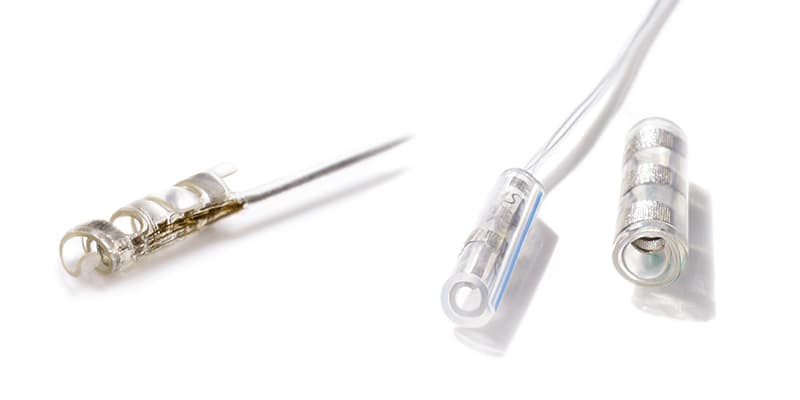Unlock the Power of Brain-Computer Interfaces with CorTec’s AirRay Electrodes
Table of Contents
- What Are Brain-Computer Interfaces (BCIs)?
- CorTec’s AirRay Electrodes: Pioneering Innovation in BCIs
- How AirRay Electrodes Enable BCIs
- What This Means for Medical Device Engineers
- The Future of BCIs with AirRay Electrodes
- Innovate with AirRay Electrodes
- Frequently Asked Questions
Imagine bridging the gap between human thought and technology—a world where prosthetic limbs move seamlessly with a single thought and neurological conditions are managed with pinpoint precision. While this might sound like a plot straight out of a futuristic movie, brain-computer interfaces (BCIs) are turning this vision into reality. At the forefront of this revolution? CorTec’s cutting-edge AirRay® electrodes.
This blog unpacks how BCI electrodes work, the pivotal role of CorTec’s AirRay electrodes, and why this tech is transforming opportunities for medical device engineers.
What Are Brain-Computer Interfaces (BCIs)?
At their essence, brain-computer interfaces are systems enabling direct communication between the brain and an external device. Unlike traditional interactions, which rely on nerves and muscles, BCIs utilize brain activity to bypass these pathways, creating direct control over machines.
Game-Changing Applications of BCIs
- Restoring Mobility: BCIs offer hope to individuals with spinal cord injuries by enabling thought-controlled prosthetic movement.
- Neurological Treatments: From epilepsy to Parkinson’s disease, BCIs can target and manage abnormal brain activity.
- Enhancing Rehabilitation: Post-stroke or traumatic brain injury (TBI) patients can leverage BCIs for targeted therapies, accelerating recovery.
For medical device engineers, BCIs represent untapped potential to create life-altering technologies.
CorTec’s AirRay Electrodes: Pioneering Innovation in BCIs
Central to any BCI system is the mechanism for interfacing with the brain. Enter CorTec’s AirRay electrodes—a marvel of modern engineering that bridges the biological and digital realms with finesse.
What Sets AirRay Electrodes Apart?
- Customizability: Whether you’re designing for R&D or clinical applications, AirRay electrodes can be tailored to fit unique project requirements. The ability to customize provides unparalleled versatility for engineers.
- Precision and Safety: Made with biocompatible materials, AirRay electrodes are safe for use in the body while providing super accurate recordings of brain activity.
- Versatility Across Applications: From brain mapping in a research lab to therapeutic interventions in patients, AirRay electrodes adapt seamlessly, making them an engineer’s dream tool for neural applications.
How AirRay Electrodes Enable BCIs
The beauty of AirRay electrodes lies in their capacity for bidirectional communication. They can:
- Record Neural Activity: Capturing brain signals with precision.
- Deliver Electrical Stimulation: Stimulating specific brain regions to correct or enhance functionality.
This dual capability unlocks groundbreaking applications, such as:
- Neuroprosthetics: Helping patients regain control of limbs or devices through thought.
- Therapeutic Devices: Treating epilepsy, depression, or chronic pain by modulating abnormal brain patterns.
- Research Advancements: Providing insights into neural networks that were previously unattainable.
What This Means for Medical Device Engineers
As a medical device engineer, your mission is to create innovative, life-enhancing technologies. CorTec’s AirRay electrodes provide the tools to make that happen.
Advantages for Engineers:
- Streamlined Development: Customization options reduce prototyping timelines.
- Future-Proof Designs: Versatility ensures compatibility with emerging BCI applications.
- Clinical Readiness: With proven safety and efficacy, integrating AirRay electrodes expedites the transition to patient use.
The Future of BCIs with AirRay Electrodes
The journey of brain-computer interfaces is just beginning, and the road ahead is paved with exciting possibilities. From reshaping patient care to opening doors for cutting-edge research, AirRay electrodes position CorTec and its collaborators as pioneers in the field.
For engineers and designers, this is your chance to be part of a movement that’s redefining what’s possible in medical technology.
Innovate with AirRay Electrodes
Chamfr is here to help you take the first step in unlocking the potential of BCIs with AirRay electrodes. With over 10 off-the-shelf configurations—including sling cuffs, tunnel cuffs, spiral cuffs, grids, and more—Chamfr makes it easy for R&D engineers to iterate faster in early-stage product development.
Whether you’re exploring neuroprosthetics, therapeutic devices, or groundbreaking neural research, Chamfr connects you with CorTec’s innovative solutions to accelerate your neuro and bioelectronic project and bring your vision to life. Explore the possibilities today and see how we can help turn your concepts into reality.
Interested in BCI? Check out these resources:
Frequently Asked Questions
BCIs are used for restoring lost mobility, treating neurological disorders, and enhancing rehabilitation therapies.
Their customizability, precision, and versatility make them ideal for capturing and delivering neural signals in various applications.
Yes, BCIs can enable individuals with disabilities to control devices or regain functions lost due to injury or disease.
AirRay electrodes are made from biocompatible materials, ensuring safety for implantation and long-term use.
By enabling bidirectional communication, they allow patients to control prosthetic limbs and devices through brain signals.
Emerging advancements include enhanced AI integration, more precise neural mapping, and expanded applications in mental health treatments.
While CorTec’s AirRay® Cortical Electrodes have received FDA clearance, the electrodes available on Chamfr are specifically intended for early-stage product development purposes and are not for human use.


